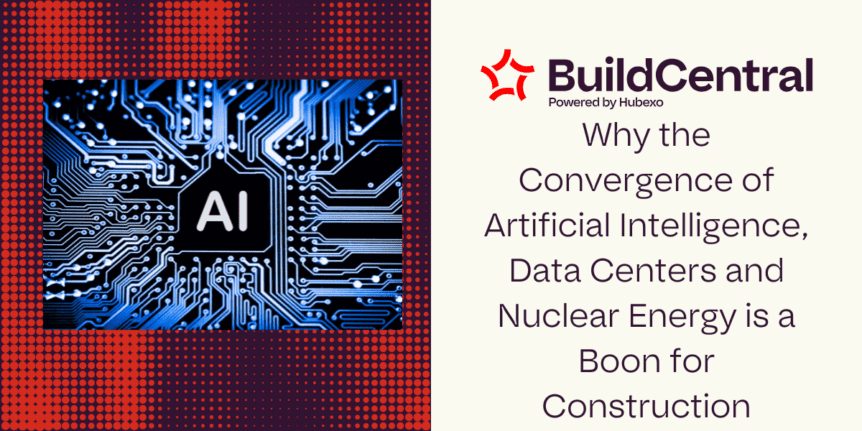
Why the Convergence of Artificial Intelligence, Data Centers and Nuclear Energy is a Boon for Construction
Table of Contents
- The Impact of AI on Energy Demand
- AI Demand and the Future of Nuclear Power Plants Development
- AI Techniques and Energy Consumption
- How AI and Machine Learning Itself are Transforming Construction
- Conclusion
The rapid rise of artificial intelligence (AI) is shaping everything from business to healthcare and beyond. But the AI revolution, while transformative, comes with a steep cost: energy consumption. As demand for powerful AI models grows, so does the need for immense, reliable, and environmentally sound energy sources. Nuclear energy has emerged as a frontrunner in meeting AI’s power requirements, offering a sustainable alternative to fossil fuels and complementing renewable sources. This is in part why many tech companies are exploring nuclear energy to power AI.
Get a free demo of our construction project data platform.
Related: How to Get Construction Project Leads.
In this article, we’ll explore why AI companies are looking to nuclear power plants, how this demand could affect nuclear plant development, and what kind of construction labor will be necessary to support the evolving infrastructure. We’ll also briefly look at how AI itself holds potential to transform construction.
Related: What Does a Nuclear Energy Transition Look Like in the U.S.?
The Impact of AI on Energy Demand
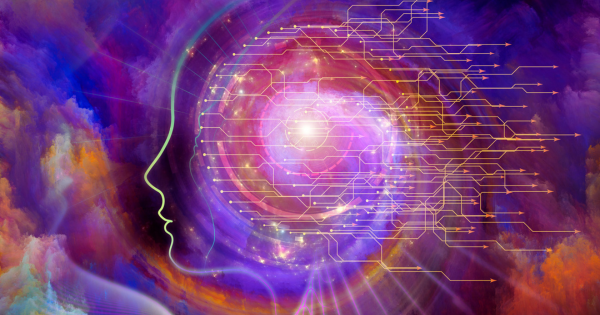
The increasing adoption of artificial intelligence (AI) is driving a significant surge in energy demand, particularly in the data center sector. As AI technologies continue to advance and become more widespread, their energy requirements are expected to grow exponentially. The U.S. needs three times its current nuclear energy capacity to meet AI’s growing power needs, a new report warns.
Speaking at a Bloomberg event on the sidelines of the World Economic Forum’s annual meeting in Davos, OpenAI CEO Sam Altman said the silver lining is that more climate-friendly sources of energy, particularly nuclear fusion or cheaper solar power and storage, are the way forward for AI. “There’s no way to get there without a breakthrough,” he said. “It motivates us to go invest more in fusion.”
Related: AI is Fueling a Nuclear Renaissance. Bill Gates and Jeff Bezos Are in the Mix.
Understanding AI’s Growing Energy Requirements
AI’s energy requirements are primarily driven by the computational power needed to train and operate machine learning models. These models require massive amounts of data processing, which in turn demands significant amounts of electrical power. According to the International Energy Agency (IEA), data centers already account for around 1% of global electricity demand, and this figure is expected to rise to 3-4% by 2030. This increase is largely due to the proliferation of AI applications, from natural language processing to deep learning models, which necessitate extensive computational resources.
Related: Infrastructure Bill: Competition for Owners to Find Contractors.
Consistent, High-Power Output for Demanding AI Systems
The energy demands of AI systems are vast. Large language models, for example, require immense processing power to train and operate, and their usage across industries only continues to grow. Nuclear power’s ability to deliver steady, high-capacity output makes it ideal for these energy-intensive processes.
Related: Big Tech Data Center Update.
- Power Availability: Unlike fossil fuels, which rely on a dwindling supply and contribute significantly to greenhouse gas emissions, nuclear energy can provide a virtually continuous power supply. This steady flow of energy is essential for AI companies, as fluctuations could disrupt processes or increase costs.
- Reduced Emissions: AI systems depend on power from sources that do not compromise environmental stability, a critical factor as climate change looms. Nuclear power produces minimal carbon emissions compared to fossil fuels, positioning it as a sustainable choice for companies prioritizing both energy security and environmental responsibility.
- Existing Infrastructure and Expertise: While renewables like wind and solar are expanding, nuclear energy benefits from an established infrastructure that can be more readily scaled up to meet AI’s needs. Current nuclear facilities can adapt more quickly to increased demand than renewable installations, which are geographically and climatically dependent.
Related: The Ultimate Guide to Risk Mitigation.
Why Renewables Alone Are Not Enough for Energy Consumption
Renewable energy sources—solar, wind, and hydroelectric power—are essential to reducing our reliance on fossil fuels. However, they aren’t always suited to handle the kind of on-demand, high-level power AI requires:
- Inconsistent Supply: AI processes require an uninterrupted power flow, which can be challenging for renewable sources due to their dependence on environmental conditions. Cloud cover or calm weather, for instance, can temporarily reduce energy output from solar or wind power.
- Scalability and Storage Challenges: While battery technology is advancing, the storage required to balance renewable energy output with AI’s energy demands is not yet sufficient. Nuclear energy, on the other hand, can run continuously, ensuring AI companies don’t face power interruptions that could disrupt operations.
- Complementary Role: AI companies are increasingly looking at hybrid energy models, combining nuclear and renewables. Nuclear can provide base-load power, while renewables can supply peak-load energy. This complementary approach maximizes both efficiency and sustainability.
Related: How Planned Construction Data Shapes Big Tech Data Center Construction.
These power demands make nuclear the best option to provide sustainable power for AI in the future.
Related: Sustainable Construction: What Did Mayans, Romans Know That We Don’t?
AI Demand and the Future of Nuclear Power Plants Development
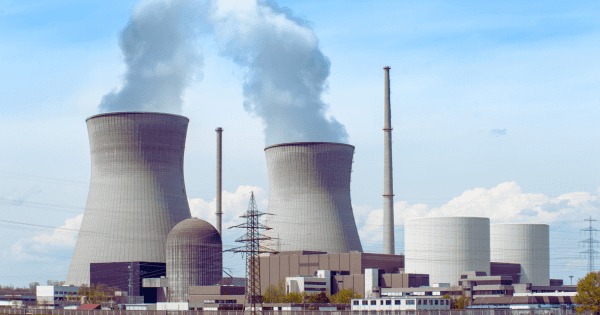
As the AI sector grows, the increasing power demand may lead to the development of new nuclear plants and refurbishment of existing facilities. This expansion in nuclear infrastructure will likely be concentrated in tech-heavy regions and areas already hosting significant data center facilities. Here are some potential impacts:
New Nuclear Plants and Refurbishment Projects
The need for high-capacity nuclear plants, capable of supporting large-scale AI operations, could drive both the construction of new plants and the refurbishment of older ones. Small modular reactors (SMRs), which are more adaptable and cost-effective than traditional reactors, may become popular due to their scalability. The enhancement of Europe’s aging power grid is also crucial to meet the increasing electricity demand driven by data centers and AI technologies.
See why Google has turned to nuclear to power AI data centers.
- Increased Project Financing: The growth in demand from AI companies will likely attract investors focused on sustainable technology, speeding up project approvals and financing.
- Repurposing Older Facilities: Aging nuclear plants could be refurbished to support AI energy needs, providing a more sustainable and economically viable option than constructing new facilities from scratch.
- Regulatory Adaptation: Governments may streamline regulations to allow faster development and refurbishment of nuclear facilities to keep pace with the rapidly increasing energy demands of the AI industry.
Related: What Does Bill Gates’s TerraPower Natrium Plant Mean for Nuclear in the U.S.?
Construction Labor Needs for Nuclear Infrastructure
Expanding nuclear power infrastructure to meet AI’s unique energy demands will require specialized construction labor and advanced technical skills. According to the Nuclear Energy Institute, each nuclear power plant employs 500 to 800 workers. Some important positions include:
- Civil and Structural Engineers: Nuclear plant development needs civil engineers experienced in designing structures that withstand high loads, environmental factors, and regulatory constraints.
- Mechanical and Electrical Engineers: AI-focused nuclear facilities will require engineers with expertise in managing the complex energy systems that power data centers and other AI operations.
- Specialized Construction Workers: Workers skilled in handling radioactive materials, building secure facilities, and adhering to strict safety protocols will be essential.
Related: Infrastructure Project Data: Your Key to More Business.
AI Techniques and Energy Consumption
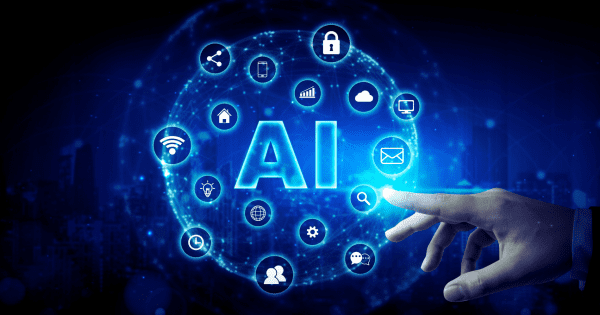
Various AI techniques have different energy consumption profiles. Understanding these differences is crucial for developing energy-efficient AI systems.
Get a free demo of our construction project data platform.
Machine Learning and Energy Efficiency
Machine learning is a key driver of AI’s energy consumption. Training machine learning models requires significant computational power, which can lead to high energy consumption. However, researchers are exploring ways to improve the energy efficiency of machine learning algorithms. For example, techniques like pruning and quantization can reduce the computational requirements of machine learning models, leading to lower energy consumption. By optimizing these algorithms, it is possible to achieve more sustainable AI operations without compromising performance.
In conclusion, the growing energy demands of AI present both challenges and opportunities for the construction and energy sectors. As AI continues to evolve, so too must our approaches to energy production and infrastructure development. By leveraging nuclear power and improving the energy efficiency of AI systems, we can support the sustainable growth of this transformative technology.
Related: Track Company Relationships to Find Decision-Maker Contacts for Your Project.
How AI and Machine Learning Itself are Transforming Construction

AI is not only driving energy demands but is also revolutionizing construction. From planning and design to on-site operations, AI can optimize various aspects of construction, allowing companies to build faster, smarter, and more sustainably.
Generative AI is also playing a crucial role in enhancing construction processes by creating innovative design solutions.
Related: Semiconductor Manufacturing is Now American Manufacturing.
Streamlining Project Planning and Management
AI-powered tools can analyze project data to forecast costs, timelines, and resource needs, enabling more accurate project planning. By predicting delays and resource shortages, AI reduces project risk and improves outcomes.
Get a free demo of our construction project data platform.
Enhancing On-Site Operations
AI-enabled devices, like drones and robotic equipment, can perform hazardous tasks on construction sites, increasing safety and efficiency. Machine learning algorithms can also analyze on-site data in real time to optimize construction schedules and workflows.
Enabling Sustainable Building Practices
AI’s ability to analyze large datasets makes it an invaluable tool for promoting sustainability in construction. By evaluating material options, energy requirements, and environmental impacts, AI can help companies make eco-friendly choices that align with global sustainability goals.
Related: Using Population Growth Trends to Identify New Construction Projects.
Conclusion
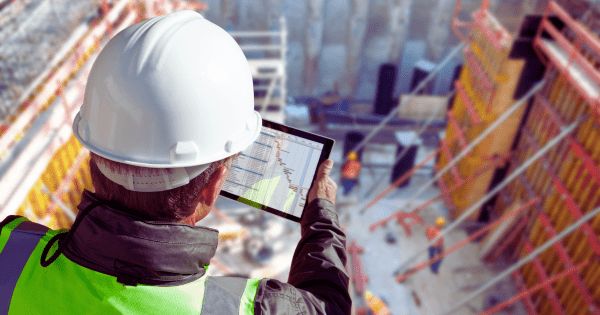
The intersection of AI and nuclear power marks a significant shift in how tech companies view their energy needs. Nuclear energy’s unique benefits, particularly its reliable, high-capacity output, position it as a foundational power source for AI. While renewable energy will play a crucial supporting role, nuclear power’s ability to operate continuously and sustainably will make it a primary choice as AI demand increases.
Related: Planned Data Center Construction in the DMV.
Expanding nuclear infrastructure to support AI will require a skilled construction workforce capable of handling both traditional and high-tech requirements. Simultaneously, AI itself will continue to transform the construction industry, making it more efficient, data-driven, and sustainable.
This synergy between AI, nuclear power, and construction signals a new era of innovation, where technology and infrastructure evolve hand in hand to support the demands of tomorrow’s world.
Check out Hubexo to find AI-related project data and location analytics.
Read similar posts on our blog page.
Complete the form below to get a free demo of our construction project data.


